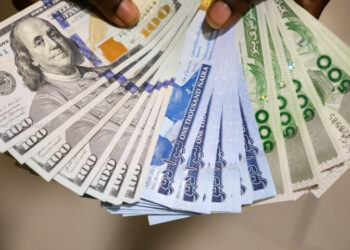In a surprising move, the People’s Bank of China (PBOC) has slashed its key short-term policy rate and benchmark lending rates, aiming to bolster economic growth amid deflationary pressures and a sluggish property market. This strategic shift underscores China’s efforts to counteract economic challenges and achieve its growth targets.
The PBOC’s decision to reduce the seven-day reverse repo rate from 1.8% to 1.7% and lower the one-year and five-year loan prime rates (LPRs) to 3.35% and 3.85% respectively is seen as a decisive step to stimulate the economy. The move comes after disappointing second-quarter economic data and a recent plenum meeting that set ambitious growth targets for the year.
China’s rate cuts are notable for their timing and magnitude, reflecting the urgency to address a range of economic issues, including a property crisis, rising debt, and weakening consumer and business sentiment. The adjustments to lending programs, including a reduction in collateral requirements for medium-term loans, are intended to enhance liquidity and support economic recovery.
Comparing China’s Rate Cuts to Nigeria’s Lending Environment
In contrast, Nigeria’s monetary policy landscape reveals a different set of challenges. While the Central Bank of Nigeria (CBN) has also faced economic pressures, including high inflation and fluctuating oil revenues, its approach to interest rates has been less aggressive. The CBN has maintained relatively high lending rates of 26.25% to combat inflation and stabilize the naira, which remains under pressure from external debt and economic uncertainties.
China’s latest rate cuts provide an interesting comparison to Nigeria’s economic strategy. The PBOC’s aggressive rate reductions highlight a proactive approach to stimulating economic growth through cheaper borrowing costs and enhanced liquidity. This contrasts with Nigeria’s more cautious stance, which emphasizes maintaining higher rates to control inflation and manage exchange rate volatility.
Nigeria’s current lending rates, which remain higher than China’s, reflect the country’s ongoing struggle to balance economic growth with inflation control. High borrowing costs have been a barrier for Nigerian businesses and consumers, limiting economic expansion and competitiveness. The CBN’s approach is driven by a need to stabilize the currency and manage external debt, but it also presents challenges for economic growth and investment.
Key Point
China’s recent monetary policy adjustments offer several lessons for Nigeria. First, a more flexible approach to interest rates and monetary policy could help Nigeria stimulate economic activity and improve competitiveness. Lowering lending rates, coupled with targeted interventions in key sectors, might enhance economic growth and support business development.
Second, Nigeria could benefit from examining how China’s adjustments to collateral requirements and monetary policy transmission mechanisms have supported its economic recovery. Implementing similar measures could improve liquidity in Nigeria’s financial system and support investment.
Finally, Nigeria must consider the broader economic context in which it operates. While China’s rate cuts are aimed at addressing specific economic challenges, Nigeria’s strategy must account for its unique set of issues, including fiscal deficits and dependence on oil revenues.
Nigeria faces different economic pressures than China, the PBOC’s recent actions offer valuable insights into how monetary policy can be used to address economic challenges and enhance growth. Nigeria’s policymakers might consider these lessons as they navigate their own economic hurdles and seek to bolster the nation’s economic resilience and competitiveness.










